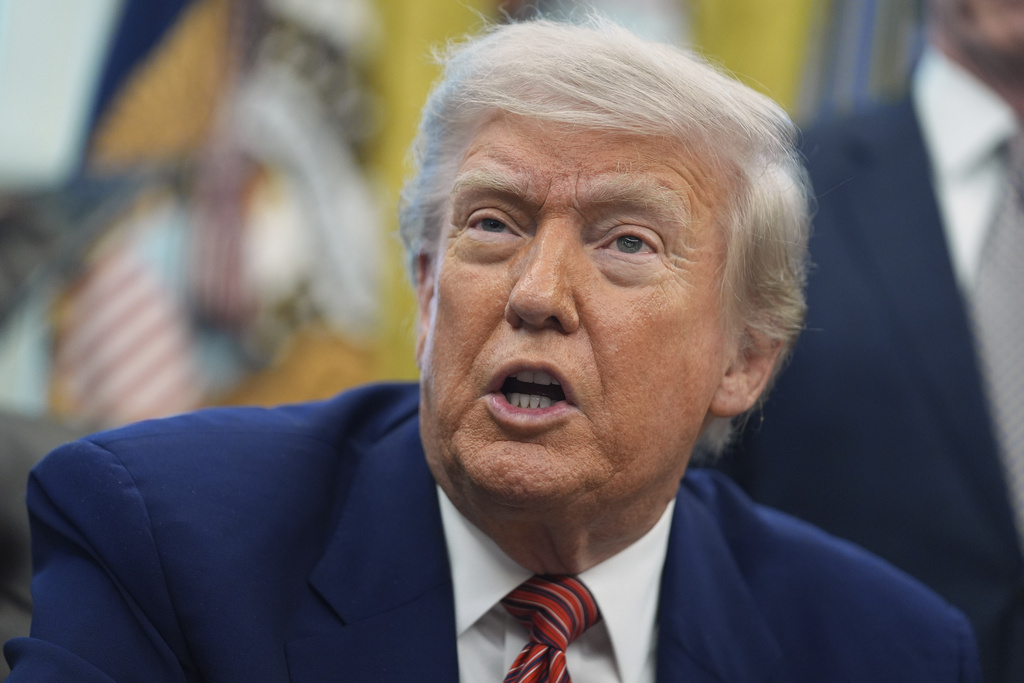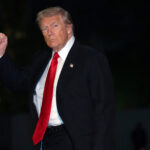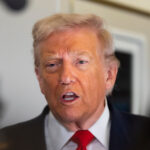Trump’s August 1 Tariff Deadline Sparks Global Tension \ Newslooks \ Washington DC \ Mary Sidiqi \ Evening Edition \ President Trump’s August 1 tariff deadline looms as global trade negotiations intensify. Only a handful of deals have been finalized since the July 9 warning. Multiple countries reached frameworks, but many key trade details remain unsettled.
Quick Looks
- Trump’s new tariffs begin August 1 unless final deals are reached
- U.S. aims for reciprocal tariffs, initially set at high default rates
- So far, formal trade agreements reached with U.K. and Vietnam
- Frameworks established with China, Japan, EU, South Korea, and others
- Some tariffs reduced in exchange for energy and infrastructure investments
- Details remain incomplete or unwritten in several agreements
- Most deals involve tariff cuts from prior threats, not full removals
- China deal includes easing restrictions on rare earths and chips
- Critics warn of uncertainty as tariff implementation nears
Deep Look
As the August 1 tariff deadline approaches, the Trump administration faces a global reckoning over its aggressive trade policy, which has already reshaped U.S. relations with dozens of countries. With President Donald Trump threatening to hike tariffs on imports from nearly every trading partner, the clock is ticking on his administration’s self-imposed deadline.
The White House launched this high-pressure strategy in April, when it announced sweeping new tariffs and proposed “reciprocal” rates across the board—some reaching as high as 50%. The intent was to pressure nations into negotiating bilateral trade deals, which Trump once envisioned as “90 trade deals in 90 days.”
But reality has moved more slowly. Since the initial July 9 warning, only two full agreements—with the United Kingdom and Vietnam—have been finalized. A handful of “frameworks” have been announced with other major economies, but many of them are still lacking formal commitments or written terms.
Here’s where things stand, country by country:
South Korea
On July 30, Trump announced a 15% tariff deal with South Korea. In return, Seoul agreed to:
- Purchase $100 billion in U.S. energy
- Invest $350 billion in U.S.-controlled infrastructure projects
- Allow American oversight in selecting investments
While the agreement averts Trump’s steeper proposed tariffs, specifics on enforcement remain unclear.
European Union
The U.S. and EU unveiled a 15% tariff framework on July 27, avoiding Trump’s prior threat of 30% tariffs on European imports. Key points include:
- 15% duties on 70% of goods, including pharmaceuticals, semiconductors, and auto parts
- 0% tariffs on select “strategic” goods
- $750 billion in new European energy investments in the U.S.
- A separate $600 billion in politically agreed, but non-binding, investments
Negotiations continue on the remaining 30% of goods still without finalized tariff rules.
Japan
On July 22, Trump introduced a 15% tariff agreement with Japan—lower than the previously threatened 25%. Highlights:
- Japan to invest $550 billion in the U.S.
- Market access expansions for U.S. autos and rice
- Relief for Japanese automakers like Toyota and Honda, who faced 25% levies on cars and parts earlier in the year
However, some global auto manufacturers worry the U.S.-Japan deal may distort competition.
Philippines
After meeting with President Ferdinand Marcos Jr., Trump reduced tariffs on Philippine imports from 20% to 19%, announcing that U.S. exports to the Philippines would face no tariffs in return.
Marcos hinted at additional concessions, such as tariff-free U.S. autos, but details remain under negotiation.
Indonesia
Trump dropped his proposed 32% tariffs to 19% on Indonesian imports in a July 15 announcement. Meanwhile, 99% of U.S. goods exported to Indonesia will be duty-free.
Indonesian President Prabowo Subianto confirmed ongoing talks to further reduce tariffs.
Vietnam
Trump’s July 2 trade deal with Vietnam gives U.S. exports duty-free access to the Vietnamese market. In exchange:
- Vietnamese goods now face a 20% tariff, down from a proposed 46%
- A separate 40% “transshipment” tax targets products routed through Vietnam to evade tariffs, mainly Chinese goods
United Kingdom
A finalized deal was struck on May 8 and includes:
- U.S. cuts on British autos, steel, and aluminum
- U.K. tariff reductions on U.S. olive oil, wine, and sporting goods
- The U.S. spared British steel and aluminum from a 50% global hike, but maintained a 25% levy on both
Though announced in May, full implementation was delayed until early June, reflecting the slow rollout of even completed deals.
China
At one point, Trump imposed 145% tariffs on Chinese goods, with China retaliating at 125%. On May 12, the two nations agreed to a 90-day truce, reducing tariffs to:
- 30% on Chinese goods
- 10% on U.S. exports to China
Key elements of a tentative trade deal emerged in June:
- China will ease restrictions on U.S. access to rare earths and critical minerals
- The U.S. will lift certain trade restrictions on Chinese firms
- On July 29, Chinese officials said both sides are discussing an extension of the Aug. 12 truce deadline
Still, the timing of full implementation remains uncertain, with both sides hinting at unresolved issues.
Looking Ahead
Despite Trump’s assertive strategy, the results have been mixed. Some countries agreed to lower tariffs and increase investments—but many others remain in limbo, with incomplete agreements or no deals at all. Trump’s vision of a restructured global trade landscape, driven by reciprocal tariffs and bilateral deals, has yielded momentum but not consistency.
With August 1 looming, businesses and global markets are watching closely to see whether new tariffs are triggered—or if last-minute diplomacy will delay or defuse the impact once again.







